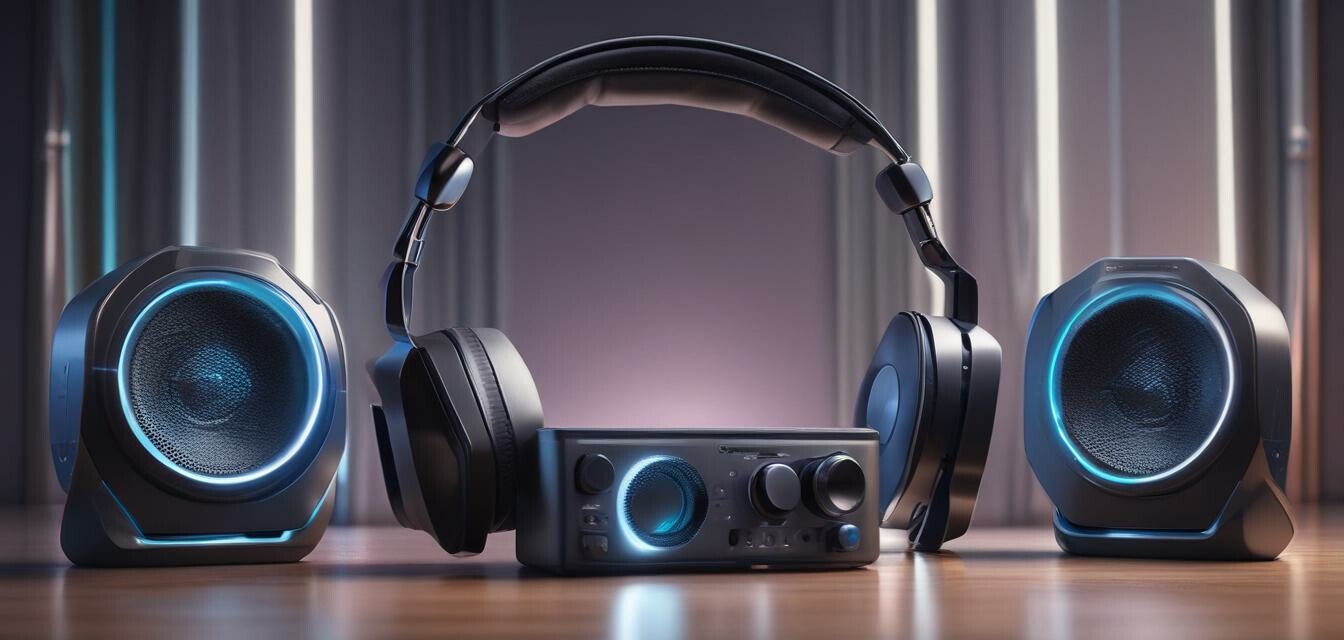
Emerging Innovations in Wireless Audio for 2025
Key takeaways
- Wireless audio technology is evolving rapidly with advancements in Bluetooth and Wi-Fi.
- New audio codecs are enhancing sound quality and reducing latency.
- Smart integration with voice assistants is becoming the norm.
- The rise of spatial audio and immersive experiences is reshaping consumer expectations.
- Energy-efficient designs are paving the way for longer battery life in audio devices.
Wireless audio technology is at the forefront of innovation as we approach 2025. The convenience of untethered sound has completely reshaped how consumers interact with their devices. With each passing year, new advancements in wireless audio promise to enhance the listening experience, making it more immersive and integrated with modern smart technologies. In this article, we will explore the latest innovations, the technologies driving them, and what these developments mean for the way we experience audio.
Trends in wireless audio technology
The wireless audio landscape is marked by significant trends that are enhancing user experiences. These include advancements in audio quality, connectivity, and device integration.
1. Advanced audio codecs
The introduction of new audio codecs is making waves in the wireless audio scene. These codecs play a crucial role in compressing audio files while maintaining high sound quality.
| Codec | Benefits | Latency |
|---|---|---|
| AptX HD | High-resolution audio, less compression | Low |
| LDAC | Superior sound quality on Sony devices | Very low |
| LC3 | Improved efficiency and audio quality | Low |
2. Enhanced battery life and energy efficiency
Battery life remains a crucial factor for consumers. Manufacturers are adopting energy-efficient designs to ensure longer usage.
- Low-power audio devices consume less energy without sacrificing performance.
- Smart power management systems are being integrated to extend device longevity.
3. Smart integration with voice assistants
Voice assistants are becoming integral to the user experience. The latest wireless audio devices come with built-in support for popular voice assistants.
- Users can control music playback, adjust volume, and manage smart home devices via voice commands.
- Integration with services like Spotify and Apple Music allows for seamless listening experiences.
Future implications for consumer experiences
As we move towards 2025, these innovations come with profound implications for how consumers engage with audio.
1. Immersive audio experiences
The rise of spatial audio technology is pushing the boundaries of traditional audio experiences.
With spatial audio, listeners can experience sound in a 3D space, making music and cinema much more engaging. This technology becomes particularly powerful in
- Home entertainment systems
- Virtual reality experiences
- Gaming setups
2. Increased personalization
With advancements in AI and machine learning, audio experiences can be tailored to individual listeners.
This could mean:
- Customizable sound profiles
- AI-curated playlists based on listening habits
- Adjustments based on room acoustics and listener preferences
3. Expansion of connected ecosystems
As smart homes become more prevalent, wireless audio systems will play a critical role in interconnected environments.
Future devices will be designed to work harmoniously with other smart devices, enabling:
- Multi-room audio distribution
- Synchronized playback across different devices
- Smart home automation via audio controls
Conclusion
The future of wireless audio technology is bright, with promising innovations set to redefine consumer experiences. As audio quality improves, devices become more energy-efficient, and seamless integration with smart technology becomes commonplace, consumers will benefit from more immersive and personalized listening experiences. Staying updated with the latest trends in wireless audio will help ensure you remain at the forefront of this exciting market.
Pros
- Improved sound quality through advanced codecs
- Longer battery life and energy efficiency
- Seamless integration with smart devices
- Personalized listening experiences via AI
Cons
- Potential compatibility issues with older devices
- Higher costs for premium audio devices
- Latency issues may still exist with some codecs
Learn more
Dive deeper into additional aspects of the electronics gadget industry. Check out our other articles on Buying Guides, discover the latest News and Trends, or explore our informative How-to Guides.
